Intermarkets' Privacy Policy
Donate to Ace of Spades HQ!
aceofspadeshq at gee mail.com
Buck:
buck.throckmorton at protonmail.com
CBD:
cbd at cutjibnewsletter.com
joe mannix:
mannix2024 at proton.me
MisHum:
petmorons at gee mail.com
J.J. Sefton:
sefton at cutjibnewsletter.com
Conan O'Brien: "Comedians" Who Do Nothing But Shout "F*** Trump" Are Not Comedians, Actual Comedians Need to be Funny
Axios: Trump Alerted the Secret Service about Marjorie Taylor Greene, Believing She Tipped Off Code Pink About His Location So That They Could Ambush Him
Even CNN Admits That the Lunatic Lesbian Leftist Tried to Run Down the ICE Agent
Iran's Supreme Ayatollah: Protesters Are Just Working On Behalf of Donald Trump
US Marines Seize Another False-Flag Ship of the "Dark Fleet"
Helen Andrews: Somalis Have Been Scamming the Government Since They Got Here
Thanks to MAHA, Several States Just Implemented Bans on Using SNAP Benefits for Junk Food; also, A Friend of the Blog Is Running for Statewide Office in Nevada
Mid-Morning Art Thread
The Morning Report — 1/9/26
Jim Sunk New Dawn 2025
Jewells45 2025
Bandersnatch 2024
GnuBreed 2024
Captain Hate 2023
moon_over_vermont 2023
westminsterdogshow 2023
Ann Wilson(Empire1) 2022
Dave In Texas 2022
Jesse in D.C. 2022
OregonMuse 2022
redc1c4 2021
Tami 2021
Chavez the Hugo 2020
Ibguy 2020
Rickl 2019
Joffen 2014
maildrop62 at proton dot me
TBD
Saturday Gardening Thread: Phoenix Edition [Y-not and KT]
Good afternoon, gardeners!
I finally have internet access after (over) #twoweeks, but content from Yours Truly will be another matter as I am still getting settled into our new digs*.
We did go to a farmer's market this morning, where we saw these beautiful flowers:
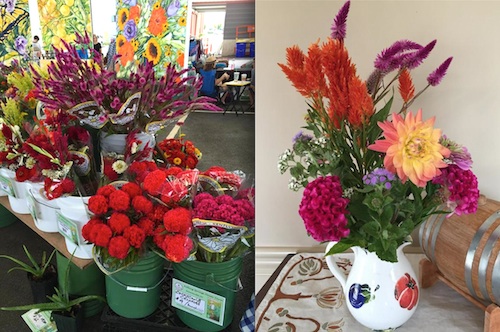
According to the grower, the fascinating, roundish bright fuchsia flowers (that some around here say look like squirrel brains) are related to the orange and pink spiky flowers. All are members of the Celosia family. They are also called Cockscomb. Pretty cool. I don't think I've ever seen them before.
Fortunately, KT is bringing it again this week:
Hooray for Hollywood
Back when I started writing this segment, the VMA Awards had just been inflicted upon the world and Y-not was mostly reduced to intermittent communications via Phone-Twitter. Seems like a long time ago.
Thinking about the words to the fine old song, I have been kind of hoping that Hollywood reached Peak Daffy Duck with that awards program, but I doubt it. Somebody who is more in touch with the Hollywood scene will have to let me know if there has been anything daffier emanating from the shining stars of Hollywood since then.

I thought it might be refreshing to turn our attention outdoors, toward a different sort of Hollywood denizen. There are plants living in Hollywood that are dramatic in their own way. There were some flamboyant flowers in the Bird of Paradise Bush discussion back in August. They can thrive in Hollywood. But I did not include a different sort of Bird of Paradise flower, the downright theatrical Strelitzias. They grow all over Hollywood. Strelitzia reginae, from South Africa, is also the official floral emblem of the City of Los Angeles. It is controversial, naturally.
Los Angeles is divided into two kinds of people: those who love birds of paradise (Strelitzia reginae) and those who loathe them. "Familiarity breeds contempt" is a cliche that applies to birds of paradise. Walk into a flower shop in Manhattan or Chicago and you can easily pay $5 for a single bird of paradise flower. Here, the flowers pop up with weedy abandon.
Those who grow up in Southern California tend to see birds of paradise as unruly clumps of paddle-shaped leaves with gaudy and scentless blooms. Those who came here from somewhere else, on the other hand, typically see birds of paradise as exotic wonders of the botanical world whose orange, blue and white blooms evoke spectacular tropical birds.
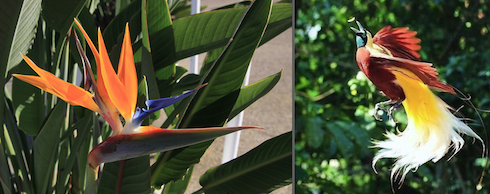
The genus to which the flower above belongs is named after the duchy of Mecklenburg-Strelitz, birthplace of Queen Charlotte of the United Kingdom. She was an amateur botanist, in addition to having 15 children. Strelitzia reginae was named after her. The famous Kew gardens are at her long-time residence to this day.
This Bird of Paradise plant does very well in large containers, blooming best when its roots are sort of crowded. It is useful near swimming pools. Where the temperature goes a little lower than 28 degrees, it requires some protection, such as a location under an overhang. Sounds like a Southern California kind of plant to me. But you can also grow it outdoors in the low deserts of Arizona with protection.
There is a narrow-leafed Strelitzia that is sometimes called the African Desert Banana. The flowers resemble those of S. reginae. It is more drought tolerant and somewhat hardier to cold than the familiar canna-leaved S. reginae. It blooms mostly from fall to spring.
Giant Bird of Paradise is grown primarily for its dramatic foliage, with leaves 5 to 10 feet long. The flowers are larger than those of S. reginae, but not as showy. S. Nicolai was named after Czar Nicholas I of Russia. I wonder if he was related to Queen Charlotte?
Giant Bird of Paradise resembles a banana plant and grows to 30 feet or more. It recovers slowly from frost damage, so where frost occurs, as in the low desert, it benefits from placement under an overhang, like S. reginae. You need a taller building to provide an overhang for this plant, though.
When I lived in Southern California, one of my neighbors had a Giant Bird of Paradise which had grown into a massive clump several feet across at the base. It visually overwhelmed their small house and the other plants in the yard. Keep proportion in mind when planting this one, particularly if planting it in the ground:

Both the Giant Bird of Paradise and the more common S. reginae can be used as houseplants. A lower-growing variegated form of S. nicolai (or maybe it is S. alba) has very striking foliage. Not everyone has a place to accommodate these plants indoors. You may see them in commercial venues, though.
For most gardeners in their outdoor range, near the pool would be a better location. Once established in the landscape, all of these plants are hard to dig up. This is one reason for its "weedy" reputation in Southern California. When in doubt, keep them in containers even outdoors.
To me, the flowers of S. Nicolai show why Strelitzia is called the "Crane Flower" in South Africa, although its petals tend to be somewhat less orderly than the crown of a Crowned Crane.

You can grow exotic Strelitzia plants from seed or from divisions. Division is the best choice if you want a particular selection, such as a dwarf plant. There are also forms with other flower colors, some of which may be inter-species hybrids. The seeds are somewhat toxic. See cultural directions here, and scroll down for a photo of the black seeds in their feathery orange Hollywood-worthy jackets. Click to enlarge.
Strelitzia flowers produce no wind-borne pollen. Allergy sufferers rejoice! They are pollinated in South Africa by long-beaked Sunbirds that look something like hummingbirds. These birds come in a variety of striking colors and patterns, though the females are often plain-looking.
The birds perch to sip nectar from flowers rather than hover like a hummingbird. When the bird sits on the spathe (the beak-like sheath) of a Bird of Paradise flower, the weight of the bird opens up the bract and releases pollen right onto the feet of the little bird. The pollen is then transferred to the next flower the bird visits. There is sometimes so much nectar in the spathe that it looks like the Bird of Paradise is crying. Just another theatrical feature of these plants.
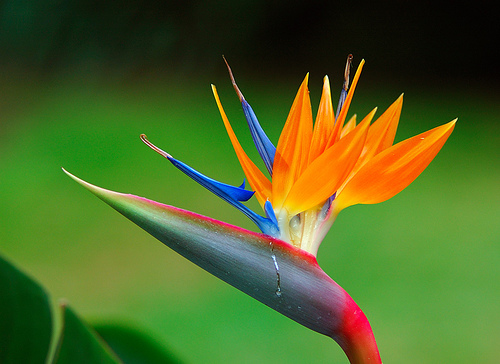
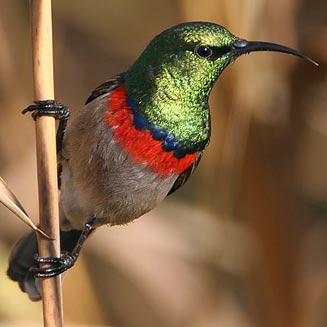
Choosing a Small Fruit Tree for Coastal California
Three weeks ago, rhomboid asked for tree suggestions. The lucky tree will be growing in Sunset Zone 23/24. Zone 23 includes Hollywood. Zone 24 runs in an uninterrupted strip of varying width along the coast from north of Santa Barbara to the Mexican border. These are the mildest climate zones in Southern California. The tree will have a northeastern exposure (walls to the south and west), so it will be in the shade part of the time, at least in winter.
I saw some good suggestions in the comments. I have come up with one easy-care suggestion, but I would like to see other suggestions and comments from The Horde. Food production, an interesting shape and non-invasive roots are desired characteristics.
I really like this index of fruit and nut trees for Florida. The site was developed by two friends as a project for their old age, according to their description. A nice idea. The index includes a lot of valuable information at the link for each type of tree, often including details such as whether or not the roots are invasive. I am not familiar with many of the trees on this list. I would enjoy learning about some of the tropical ones. Has anybody grown or tasted one of these? Not all of them would be suitable in Southern California, but many would be.
My easy-care suggestion for rhomboid is Feijoa sellowiana (Acca sellowiana), the Pineapple Guava. It is a relative of true guavas. The plant does well even in the desert, but fruit may not set there. Fruit quality is generally best in cooler-summer areas. It is grown commercially in the San Francisco Bay area. It is the hardiest of the "subtropical" fruits. Sunset rates it as adapted to Sunset Zone 7 (including parts of the Rogue River Valley in Oregon) and as marginal in Zone 6. The Portland area seems to be the safest part of Zone 6 for this plant. It is described as deer-resistant.
Feijoa takes sun or part shade. It can be pruned to almost any shape, including espaliers, tall hedges or short foundation plants. Fruit can be harvested by shaking the tree and picking up the fallen fruit. But be careful about gathering fruit from under a feijoa hedge to make Roasted Feijoa Chutney, or this could happen to you, too:
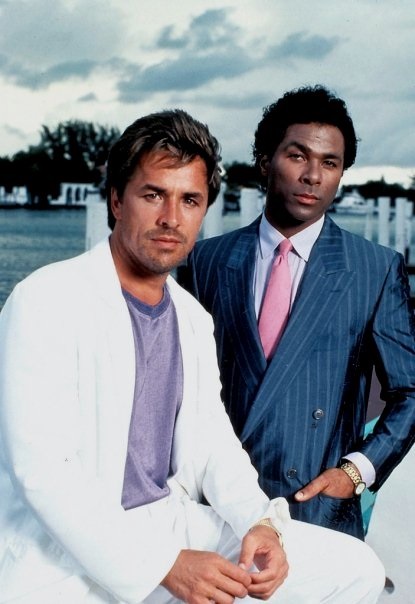
In our hot-summer valley, feijoa plants are most commonly used as short foundation shrubs that look good all year. The Master Gardeners of even hotter Pima County, Arizona suggest that this use generally involves over-pruning. They are probably mostly correct, though I think that there are some small-leaved cultivars or strains developed just for this landscape use. I seldom see fruit on the plants around here. Temperatures above 90 degrees can reportedly interfere with fruit set, and our temperatures sometimes go above 100 degrees in May.

Pineapple guavas will naturally grow into a very large shrub if not pruned at all. They are easily trained into a small tree somewhat resembling an olive. The photo below is from New Zealand, where people seem to really love feijoas. It shows both single-trunked and multiple-trunked trees.
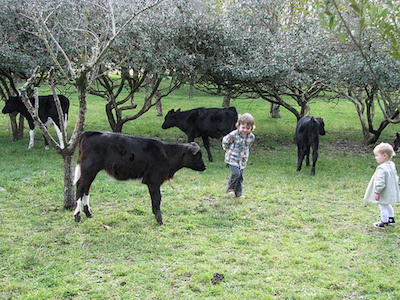
Here is another photo of a handsome tree, in Berkeley.

It was posted by a company that makes gelato and also Feijoa Sorbetto. "This might be the best sorbetto flavor we make all year."
Fruit flavor brings us to cultivar selection. For best fruit production and quality, named cultivars should be chosen, even though seedlings are often sold for landscape use. California Rare Fruit Growers has descriptions of many desirable cultivars. The Florida site linked earlier includes some additional choices on their feijoa cultivar page. Some of the best require cross-pollination. These cultivars are not always easy to find. I am linking an LA Times article that includes some plant sources, even though the article seems to conflate feijoas with true guavas. CRFG members are another possible source for plant starts of the rarer cultivars in California.
Relatively large-fruited Nazemetz and Trask, along with small-fruited Pineapple Gem, are recommended for warm-summer climates. This probably does not mean "hot-summer climates." One clue to climate adaptability is to note where a cultivar was developed or discovered.
There seems to be a wider choice of recommended cultivars for cool-summer areas. With careful selection, some gardeners in coastal California can have fruit from early autumn through January. One way to get cross-pollination and more fruit is to plant two or three compatible cultivars in the same large planting hole, then train them to resemble a multiple-trunked tree.
I have had fruit from a pineapple guava tree grown on an east wall in the Salinas Valley, where summers are cool and windy. I do not know which cultivar it was, or if it was a seedling. The flesh just inside the peel was grainy, like a firm, granular pear. The pulp in the center was translucent and honey-colored. The flavor reminded me of SweetTart candies, with pineapple, strawberry and passion fruit overtones. Fun to eat.
The Wikipedia entry does not agree with me about the flavor of the fruit. It is uncharacteristically amusing, particularly the part about how to eat a feijoa. After describing two ways to tear one apart with your teeth if you have gone out to harvest them without a spoon, it says:
Peeling a small fruit and eating whole is a particularly sensual way of eating a feijoa and is called a "feijoa bomb".
I have also munched on slightly sweet feijoa flower petals in Southern California. I think they have kind of a perfume-y flavor, but the wiki says "cinnamon". In areas where fruit does not form, you might still be able to enjoy some flower petals in a fruit salad.

Helping Young Plants Grow Faster
One drawback of the pineapple guava (if you want a tree) is that it grows slowly. Landscapers have started using vertical sections of perforated drainage pipe to increase air and water to the roots of young trees. This speeds up their growth rate, as in the illustration below for deep-watering a tomato plant. Landscapers also use the fabric sleeves made for these pipes, because the pipes will stay in the ground for a long time. Drain caps are available to keep debris and small animals out of the pipes. Or you can gather the fabric sleeve together at the top of each pipe and fasten it closed, stuffing the excess inside the pipe.

Some plant enthusiasts make their own perforations on smaller-gauge pipe with a drill and make their own fabric sleeves from landscaping fabric or non-woven row cover and fabric glue. They may even use smaller perforated pipes in a container, sometimes joining two verticals with a horizontal section positioned to run directly under the plant.
These perforated pipes are worth considering if you want better performance from your potted plants, or if the soil in your garden is very heavy and you are planting something you would like to leave in place for several years. I have grown and killed some plants which might have benefited from extra air and more even water distribution around the roots.
Y-not: Thanks KT!
To wrap things up, can you believe Fall is coming?

Well it is in my neck of the woods, anyway.
The above scene reminds me of this song:
What's happening in YOUR gardens these days?
*There is a pretty big hint about my new locale in the picture.
Axeman: "Larry Miller was quite good back in the day. Could ..."
night lifted: "I hope the SIL's comments scuttle Tony Blair ..."
Aetius451AD work phone: "Also, Bill Engvall and Jeff Foxworthy might not be ..."
gKWVE: "It's the Houston Wade Community College from now o ..."
Axeman: "The Solar brothers are funny. No idea of their pol ..."
The Administration of The Edmonds Community College: ""Leftist activist Houston Wade, who is a Edmonds C ..."
IrishEi: "Posted by: ChristyBlinkyTheGreat at January 09, 20 ..."
Baton The Hatches!: "Lisa Whelchel and Erin Moran starred in a TV movie ..."
Aetius451AD work phone: "The funniest clean comedian is Regan, by far. Pos ..."
t-bird: "[i]caught trying to meet with an 11 year old. He h ..."
MAGA_Ken: "Was thinking the same thing. He annoyed me a *lot* ..."
Conan O'Brien: "Comedians" Who Do Nothing But Shout "F*** Trump" Are Not Comedians, Actual Comedians Need to be Funny
Axios: Trump Alerted the Secret Service about Marjorie Taylor Greene, Believing She Tipped Off Code Pink About His Location So That They Could Ambush Him
Even CNN Admits That the Lunatic Lesbian Leftist Tried to Run Down the ICE Agent
Iran's Supreme Ayatollah: Protesters Are Just Working On Behalf of Donald Trump
US Marines Seize Another False-Flag Ship of the "Dark Fleet"
Helen Andrews: Somalis Have Been Scamming the Government Since They Got Here
Thanks to MAHA, Several States Just Implemented Bans on Using SNAP Benefits for Junk Food; also, A Friend of the Blog Is Running for Statewide Office in Nevada
Mid-Morning Art Thread
The Morning Report — 1/9/26
Paul Anka Haiku Contest Announcement
Integrity SAT's: Entrance Exam for Paul Anka's Band
AllahPundit's Paul Anka 45's Collection
AnkaPundit: Paul Anka Takes Over the Site for a Weekend (Continues through to Monday's postings)
George Bush Slices Don Rumsfeld Like an F*ckin' Hammer
Democratic Forays into Erotica
New Shows On Gore's DNC/MTV Network
Nicknames for Potatoes, By People Who Really Hate Potatoes
Star Wars Euphemisms for Self-Abuse
Signs You're at an Iraqi "Wedding Party"
Signs Your Clown Has Gone Bad
Signs That You, Geroge Michael, Should Probably Just Give It Up
Signs of Hip-Hop Influence on John Kerry
NYT Headlines Spinning Bush's Jobs Boom
Things People Are More Likely to Say Than "Did You Hear What Al Franken Said Yesterday?"
Signs that Paul Krugman Has Lost His Frickin' Mind
All-Time Best NBA Players, According to Senator Robert Byrd
Other Bad Things About the Jews, According to the Koran
Signs That David Letterman Just Doesn't Care Anymore
Examples of Bob Kerrey's Insufferable Racial Jackassery
Signs Andy Rooney Is Going Senile
Other Judgments Dick Clarke Made About Condi Rice Based on Her Appearance
Collective Names for Groups of People
John Kerry's Other Vietnam Super-Pets
Cool Things About the XM8 Assault Rifle
Media-Approved Facts About the Democrat Spy
Changes to Make Christianity More "Inclusive"
Secret John Kerry Senatorial Accomplishments
John Edwards Campaign Excuses
John Kerry Pick-Up Lines
Changes Liberal Senator George Michell Will Make at Disney
Torments in Dog-Hell
The Ace of Spades HQ Sex-for-Money Skankathon
A D&D Guide to the Democratic Candidates
Margaret Cho: Just Not Funny
More Margaret Cho Abuse
Margaret Cho: Still Not Funny
Iraqi Prisoner Claims He Was Raped... By Woman
Wonkette Announces "Morning Zoo" Format
John Kerry's "Plan" Causes Surrender of Moqtada al-Sadr's Militia
World Muslim Leaders Apologize for Nick Berg's Beheading
Michael Moore Goes on Lunchtime Manhattan Death-Spree
Milestone: Oliver Willis Posts 400th "Fake News Article" Referencing Britney Spears
Liberal Economists Rue a "New Decade of Greed"
Artificial Insouciance: Maureen Dowd's Word Processor Revolts Against Her Numbing Imbecility
Intelligence Officials Eye Blogs for Tips
They Done Found Us Out, Cletus: Intrepid Internet Detective Figures Out Our Master Plan
Shock: Josh Marshall Almost Mentions Sarin Discovery in Iraq
Leather-Clad Biker Freaks Terrorize Australian Town
When Clinton Was President, Torture Was Cool
What Wonkette Means When She Explains What Tina Brown Means
Wonkette's Stand-Up Act
Wankette HQ Gay-Rumors Du Jour
Here's What's Bugging Me: Goose and Slider
My Own Micah Wright Style Confession of Dishonesty
Outraged "Conservatives" React to the FMA
An On-Line Impression of Dennis Miller Having Sex with a Kodiak Bear
The Story the Rightwing Media Refuses to Report!
Our Lunch with David "Glengarry Glen Ross" Mamet
The House of Love: Paul Krugman
A Michael Moore Mystery (TM)
The Dowd-O-Matic!
Liberal Consistency and Other Myths
Kepler's Laws of Liberal Media Bias
John Kerry-- The Splunge! Candidate
"Divisive" Politics & "Attacks on Patriotism" (very long)
The Donkey ("The Raven" parody)

